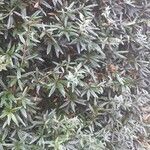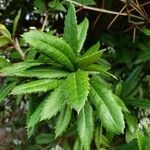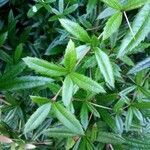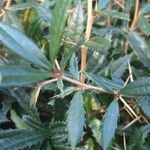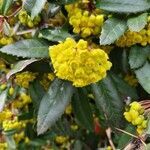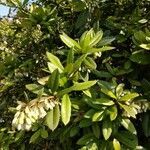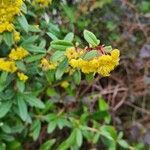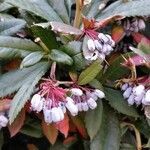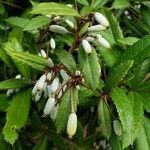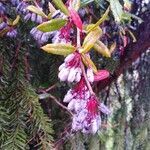Shrubs, evergreen, 1-3 m tall. Branches yellow-brown or gray-brown; shoots pale yellow, sulcate, scarcely black verruculose; spines 3-fid, concolorous, 1-4 cm, stout, adaxially sulcate. Petiole 1-4 mm; leaf blade abaxially pale green, adaxially deep green, elliptic, lanceolate, or oblanceolate, 3-10 × 1-3 cm, leathery, both surfaces not pruinose, abaxially with raised midvein, lateral veins slightly raised or not, adaxially with impressed midvein, lateral veins slightly visible, both surfaces with inconspicuous reticulate veins, base cuneate, margin 10-20-spinose-serrate on each side, apex acuminate. Flowers 10-25-fascicled. Pedicels 8-15 mm; bractlets ovate, ca. 2.5 × 1.5 mm, apex acute. Sepals in 2 whorls; outer sepals ovate, ca. 5 × 3 mm, apex acute; inner sepals oblong-elliptic, ca. 7 × 4 mm, apex rounded, obtuse. Petals oblong-elliptic, ca. 6 × 3 mm, base clawed, with oblong glands, apex emarginate. Anther connective not prolonged. Ovules solitary. Berry blue-black, oblong, 7-8 × 3.5-4 mm, white pruinose, style persistent. Fl. Mar, fr. May-Nov. 2n = 28+2B*.
More
A shrub. It grows 3 m tall. It keeps its leaves throughout the year. The leaves are long and shiny and have spines. The leaves are dark green above and pale underneath. The flowers are usually yellow but sometimes red and occur in large groups. The fruit are egg shaped and blue-black. They have a bloom.
It is a subtropical plant. It can tolerate shade. It grows in forests between 1,100-2,100 m above sea level. In Sichuan. In Hobart Botanical Gardens.
